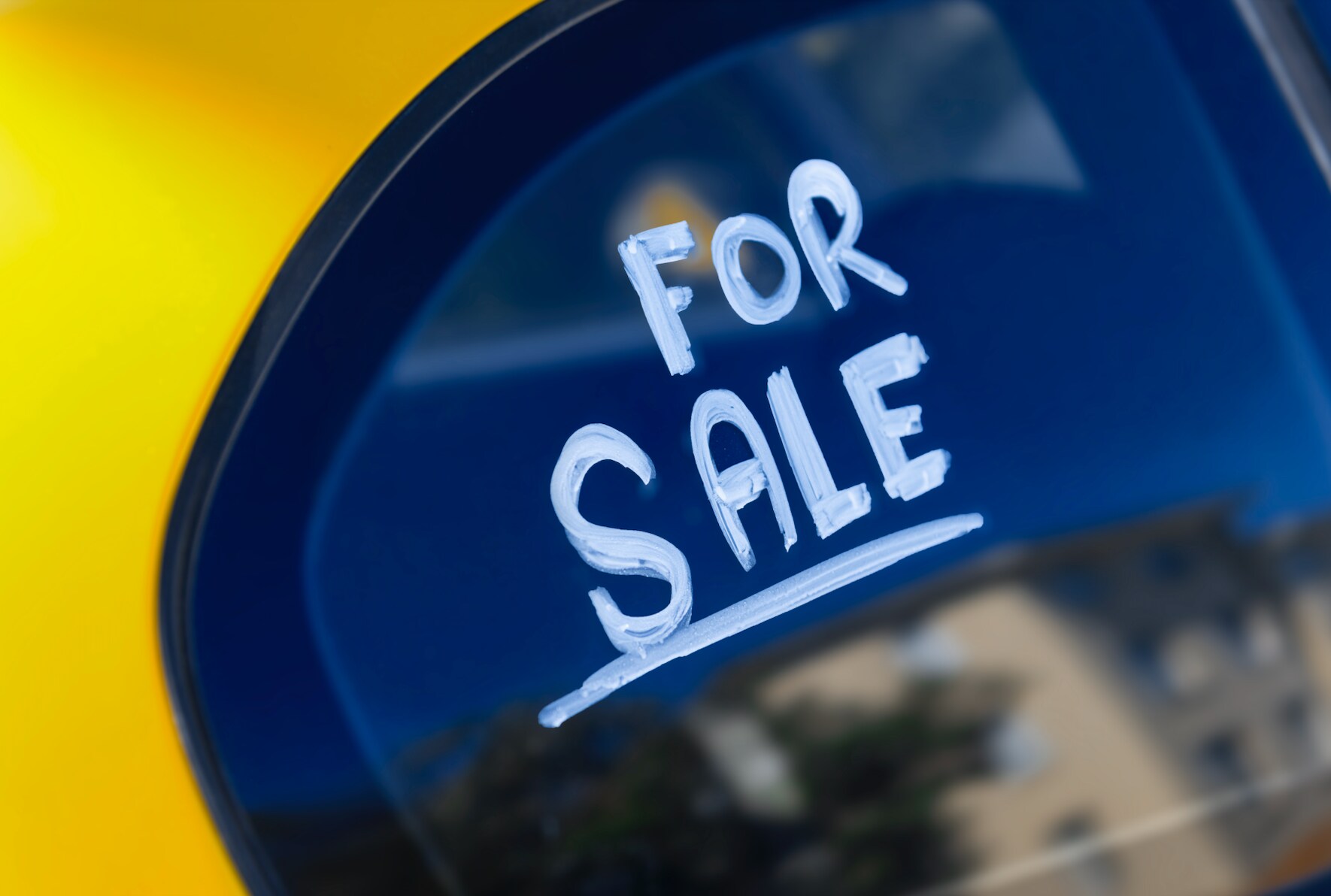There are lots of good reasons for trading in your old car rather than taking the time, effort, and expense to prepare the vehicle for a private sale. And after all that effort, do you really get more for the car and is it worth it?
Best Price for your Trade-in
How Trade-ins Work
Traditional wisdom dictates that selling your car privately will get you more cash, but today, used cars are fetching higher prices and that makes selling to a dealer more attractive. With a trade-in, dealerships make offers on your vehicle. You choose the best deal, and the money can then go toward the purchase of another newer car. Dealer trade-ins are usually quicker and easier to negotiate than trying to tell your old car by taking out an ad, fixing any mechanical problems, detailing the vehicle, taking photos and taking out ads, and then dealing with prospective buyers. Just negotiating on the price can be a major pain. And that's if everything goes according to plan. You can also have difficulties with being scammed or getting your money, and then there's dealing with the DMV to transfer the title and registration and pay taxes on the sale.
By trading your car through a dealership, the dealer takes care of all those things, and you can take an offer and be in your new car the same day. Trading your old car to a dealer reduces what you will owe on a new car, and you'll even likely get a tax break. The dealer applies the amount they pay for your trade-in so that you borrow less money for a new car loan and in some states, the value of your trade-in reduces the amount of taxes you will pay on your new vehicle.


Getting your Car's Trade-in Value
Before you head out to the dealerships to get offers on your car, determine your vehicle's current value by using an online price guide. Kelley Blue Book offers an excellent Car Value Tool. Simply enter your car's 17-digit Vehicle Identification Number (VIN) or license plate number to get the ball rolling. You'll get an instant cash offer for your car that will give you a good idea of what the vehicle is worth. According to KBB, "The Kelley Blue Book Trade In Range shows what a consumer can expect to receive for their car this week when trading it in at a dealer." KBB's values are based on actual sales transactions and auction prices, which are analyzed to account for market trends and adjusted for your geological region.
You'll need to know your trade-in vehicle's year, make, model, trim, mileage and condition to get the most accurate value. Once you know what your trade-in is worth, take that information to your local Lithia Motors dealer to negotiate a trade-in price. Your trade-in might be worth more than you think.
Not all Prices are Created Equal
It is important to know the terms for various car values. These include the retail price, which is the manufacturer's suggested retail price (MSRP) which is the dealership's price for a new car set by the automaker. Then there is the private sale price, which is what you hope to get when selling your used car to a private person. The trade-in value is the price you get when trading in your old car to a dealer based on industry guidelines. Lastly, there's the wholesale price, which is the amount a dealer pays when purchasing a vehicle at auction.


What you Owe
If you still owe money to a lender on your old car, you'll need to contact the lender to find out the payoff amount. Be aware of any prepay penalties for paying off the loan early. If the car loan has been paid in full, you should have the car's title, free and clear and you are ready to trade it in at a dealer.
Positive equity. If your used car is worth more than what is owed on it, you can use the difference as a down payment for your new car. For instance, if you owe $5,000 on a car that is valued at $12,000, you can apply $7,000 credit toward the purchase of your new car.
Negative equity. On the other hand, if your trade-in is worth less than what you owe on it, you'll likely need to roll the balance into a new loan. In other words, if you owe $15,000 on a car that is worth $10,000, you could roll $5,000 into your new car loan to pay off the upside-down loan.
You can also ask the dealer to cover your outstanding balance on your trade-in. Plus, if you have GAP insurance, it will cover the negative equity.
Trade-in Documents
Here is what you will need to take to the dealer to speed up the trade-in process: the Title to your old car. This proves that you have the ability to transfer the vehicle ownership to the dealer. If you have lost the Title, the DMV can help you get a new one. This takes at least two weeks to obtain. You'll also need the Car Registration which proves ownership, even if you still have a loan on the car. If you still owe money on the car, bring the Loan Documents. The dealer will need to see the loan account number and check the remaining balance. Keep in mind that the dealer will also need to see your driver's license and insurance card, proof of employment and place or residence.
It is also a good idea to bring any vehicle service records. This proves that you have always taken the proper care of the car. Showing proper maintenance can even get you more for your trade-in.


Tips to Get More for your Trade
Reduce dealer negotiations by bringing several trade-in quotes from different dealers. The amount a dealer will give you has a lot to do with what they need on the lot. It has to do with how confident the dealer is that your car will sell quickly and easily. It comes down to the kind of car you are trading and the vehicle's condition. Get all offers in writing.
You might get more for your trade-in if the dealer needs your brand of car. A Toyota dealer might be more interested in your BMW if they are lacking used luxury cars at the moment. Your vehicle will help to diversify what is on the lot.
Don't forget to get quotes from online car buyers. For instance, Driveway will give you an instant quote on your car and it is good for seven days.
Negotiate
When negotiating the price of your trade-in and the price of your new car, don't forget to watch out for common dealer fees that can account for up to 10 percent of what you will pay. While tax, title and license fees are set in stone, many other fees are negotiable. Ask about:
- Documentation fees
- Reconditioning fees
- Extended warranties as these can often be negotiated in your favor.
- Other fees you can negotiate include market adjustment fees, GAP insurance, loan protection insurance, and such coverage plans as tire and wheel protection, appearance protection packages, and added anti-theft devices.
Be sure to ask the dealer which industry guide they use to obtain their trade-in value on your car. Crosscheck the data by using your smartphone to be sure the appraisal is honest. Also check the price of your new car to make sure you are not overpaying.

Let Lithia Help
With over 75 years of experience and hundreds of dealerships across the country to provide our customers with personal transportation solutions, Lithia Motors will help you trade-in your old car and drive out with a new vehicle that is right for you.


